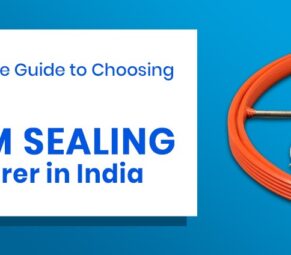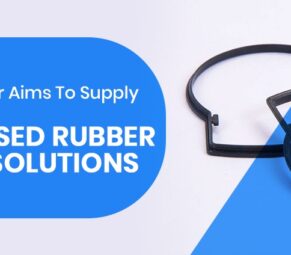NBR is a synthetic copolymer composed of butadiene and acrylonitrile. It is extensively preferred due to its resistance to fuels, oils, and other chemicals.
Salient Features:
- Oil resistant
- High mechanical strength
- Mean compression set
- Abrasion-resistant
- Weather-resistant and low aging
Common Applications:
- Oil seals
- Disposable non-latex gloves
- Footwear and floor mats
- Automotive, marine, and aeronautical fuel and oil systems
- Adhesives
- Belts, hoses, O rings, gaskets
Properties:
- Hardness: 30-90 Shore A
- Temperature resistance: -30° C to + 100° C (+ 120° C)
- Standard colors: Black
Advantages:
NBR performs exceptionally well in vegetable oils, aliphatic hydrocarbons, petroleum-based oils, and fuels, silicone oils, dilute acids, water (below 100°C), and ethylene glycol.
Limitations:
- May oxidize when in contact with strong oxidizers.
- NBR compounds are prone to automotive brake fluid, ketones, esters, ozone, aldehydes, aromatic hydrocarbons, ethers, and strong acids.
NBR is a synthetic copolymer composed of butadiene and acrylonitrile. It is extensively preferred due to its resistance to fuels, oils, and other chemicals.
Salient Features:
- Oil resistant
- High mechanical strength
- Mean compression set
- Abrasion-resistant
- Weather-resistant and low aging
Common Applications:
- Oil seals
- Disposable non-latex gloves
- Footwear and floor mats
- Automotive, marine, and aeronautical fuel and oil systems
- Adhesives
- Belts, hoses, O rings, gaskets
Properties:
- Hardness: 30-90 Shore A
- Temperature resistance: -30° C to + 100° C (+ 120° C)
- Standard colors: Black
Advantages:
NBR performs exceptionally well in vegetable oils, aliphatic hydrocarbons, petroleum-based oils, and fuels, silicone oils, dilute acids, water (below 100°C), and ethylene glycol.
Limitations:
- May oxidize when in contact with strong oxidizers.
- NBR compounds are prone to automotive brake fluid, ketones, esters, ozone, aldehydes, aromatic hydrocarbons, ethers, and strong acids.












